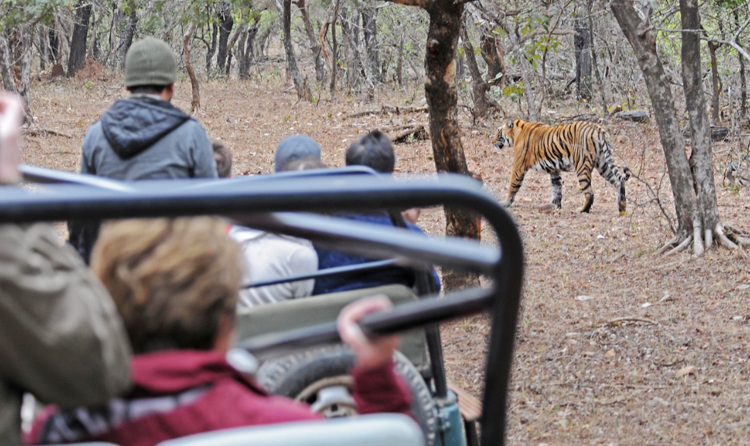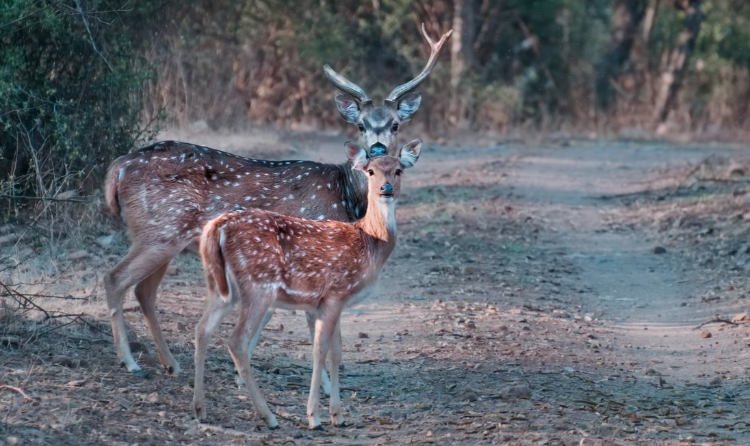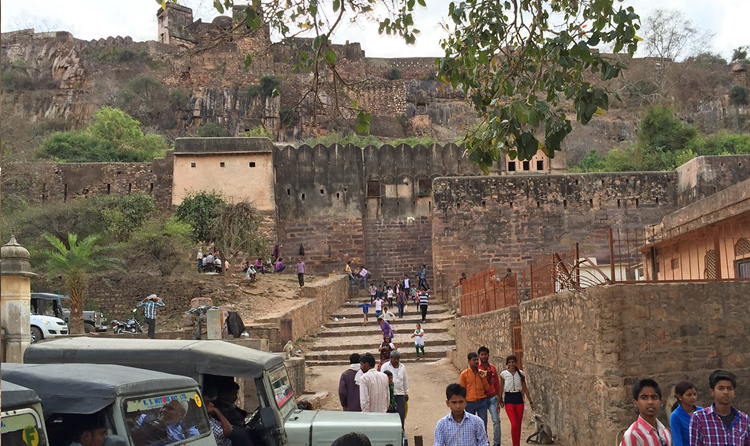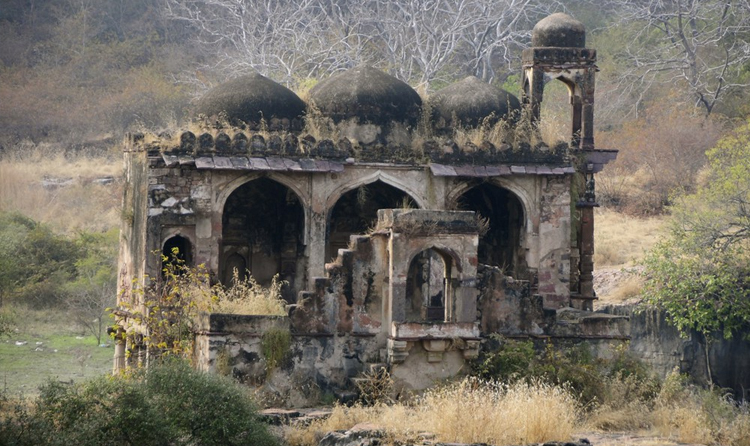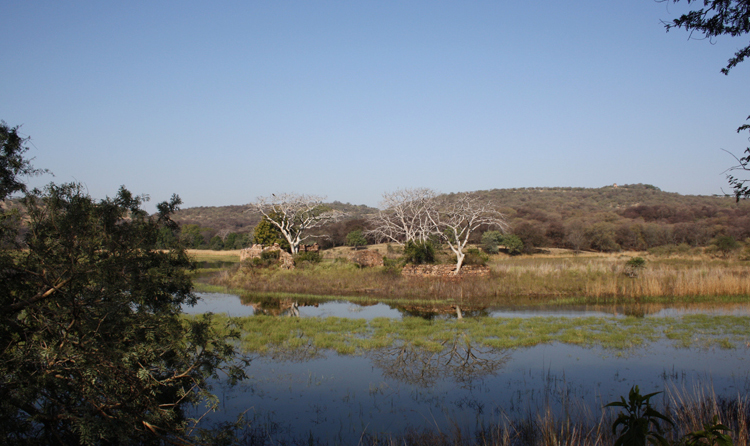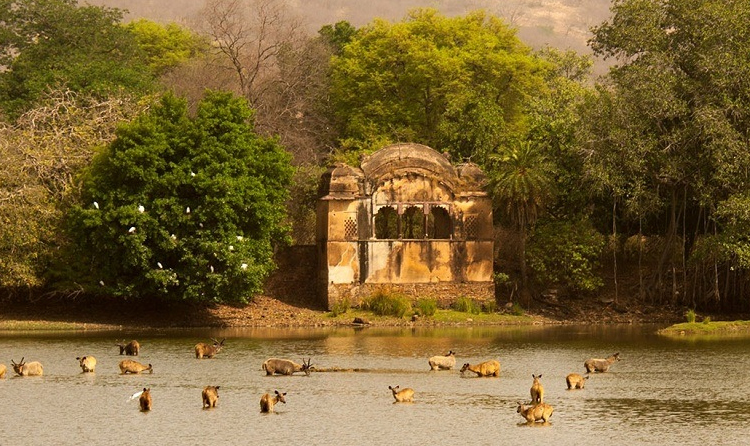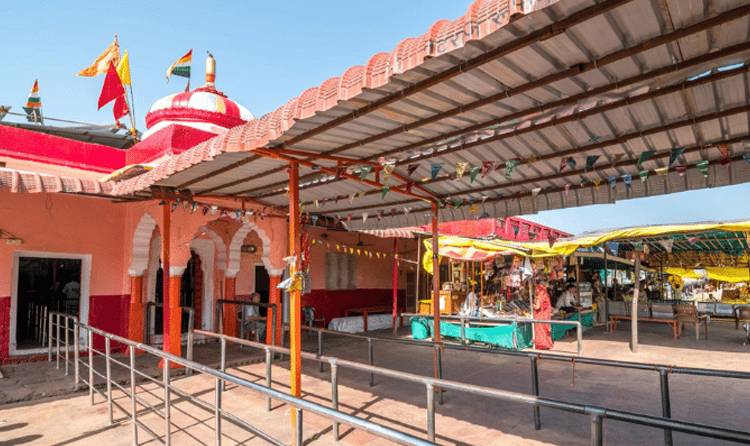Ranthambore
Ranthambore: A Comprehensive Guide
Ranthambore is a national park and tiger reserve located approximately 14 kilometers from Sawai Madhopur. It is situated at the junction of the Aravalli and Vindhya mountain ranges, offering a diverse landscape of rolling hills, crags, meadows, lakes, and rivulets. The park is renowned for its population of Bengal tigers and is home to a variety of flora and fauna, including sloth bears, leopards, caracals, jackals, foxes, hyenas, mongooses, and numerous bird species.
Ranthambore History:
Ranthambore has a rich historical background. It was once a private game reserve of the royal House of Jaipur. The renowned Ranthambore Fort was built by the Chauhan rulers in the 10th century. The fort witnessed many sieges and battles, with one of the most famous being the war of Rao Hamir in 1301 against Alauddin Khilji. The fort is also associated with the historical legend of royal women performing ‘jauhar’ (self-immolation) during sieges.
Ranthambore’s Top Attractions
Ranthambore, located in the state of Rajasthan, India, is renowned for its majestic wildlife and historical landmarks. Here are some of the best places to visit in Ranthambore:
- Ranthambore National Park and Tiger Reserve: This is the prime attraction of Ranthambore. It offers a chance to witness the magnificent Royal Bengal Tiger in its natural habitat. The park is also home to a diverse range of flora and fauna including leopards, sloth bears, sambar deer, and various bird species. Safari tours are available for visitors to explore the park.
- Ranthambore Fort: Built in the 10th century by the Chauhan rulers, the Ranthambore Fort is a UNESCO World Heritage Site. It offers breathtaking views of the surrounding landscapes and houses several temples, palaces, and reservoirs within its premises. The fort also has historical significance, having witnessed numerous battles and sieges.
- Padam Talao: This is the largest of the several lakes in Ranthambore National Park. It is famous for its picturesque surroundings and for being a popular spot for wildlife sightings, especially for birdwatching. Visitors can also enjoy boating in the lake.
- Raj Bagh Ruins: These ancient ruins located within the national park are remnants of an ancient royal hunting lodge. They offer a glimpse into the rich history of the region and provide a scenic backdrop for wildlife photography.
- Malik Talao: Another significant lake within Ranthambore National Park, Malik Talao is known for its tranquil atmosphere and as a habitat for various aquatic birds and animals. It is an ideal spot for birdwatching and nature photography.
- Kachida Valley: This picturesque valley is famous for its rugged terrain and rocky outcrops. It is an excellent place for wildlife sightings, especially for spotting sloth bears and leopards. The valley is also known for its scenic beauty, making it a favorite among nature enthusiasts and photographers.
- Trinetra Ganesh Temple: Situated within the premises of Ranthambore Fort, this ancient temple dedicated to Lord Ganesha is a significant pilgrimage site for devotees. The temple holds religious importance and attracts visitors with its beautiful architecture and serene ambiance.
These are just a few of the many attractions that make Ranthambore a must-visit destination for wildlife enthusiasts, history buffs, and nature lovers alike.
Ranthambore Time:
Ranthambore National Park is open for visitors from October to June. The best time to visit is during the dry season (October to April) when the vegetation is sparse, making it easier to spot wildlife, especially tigers.
Ranthambore Climate:
Ranthambore experiences a tropical climate with three distinct seasons:
- Summer (April to June): Hot and dry, with temperatures often exceeding 40°C (104°F).
- Monsoon (July to September): Humid with moderate to heavy rainfall, rejuvenating the vegetation and landscape.
- Winter (October to March): Pleasant with cool mornings and evenings, making it the ideal time for wildlife sightings.
How to Reach Ranthambore:
By Air: The nearest airport is Sanganer Airport in Jaipur, about 180 km away. It offers regular flights from major cities like Delhi, Mumbai, Chennai, and Bangalore. From Jaipur, tourists can take a taxi or bus to reach Ranthambore.
By Rail: Sawai Madhopur Railway Station is the nearest, located 10 km from the park. It is well-connected to major cities. From the station, visitors can hire a local bus, taxi, or cab to reach Ranthambore.
By Road: Ranthambore is accessible via state bus service, private buses, and taxis from major cities like Jaipur, Delhi, Ahmedabad, Ajmer, and Jodhpur. Distances and approximate travel times:
- Delhi to Ranthambore: 381 km (Approx. 6 hours via NH8 and NH 11A)
- Jaipur to Ranthambore: 180 km (Approx. 3 hours via Rajasthan State Hwy 24)
- Udaipur to Ranthambore: 388 km (Approx. 6 hours 10 minutes via NH 76 and RJ SH 29)
- Agra to Ranthambore: 239 km (Approx. 4 hours 23 minutes via RJ SH 1)
- Bharatpur to Ranthambore: 202 km (Approx. 3 hours 37 minutes via RJ SH 1)
- Ahmedabad to Ranthambore: 640 km (Approx. 9 hours 47 minutes via NH8 and NH 76)
- Mumbai to Ranthambore: 1031 km (Approx. 16 hours 51 minutes via NH 3)
Conclusion:Ranthambore harmoniously combines wildlife and history. With its iconic National Park showcasing Bengal Tigers, alongside the historic Ranthambore Fort, tranquil lakes, and ancient ruins, it enthralls wildlife enthusiasts, history buffs, and nature lovers, promising a memorable journey through India’s rich natural and cultural heritage.
Useful Links
Day Tours
Tours Packages
Visit us
Address : 5, Sansar Chandra Road, Anaj Mandi, Jalupura, Jaipur, Rajasthan 302016
Phone : +91-9587869215
Email : info@jaipurtourtaxi.com


